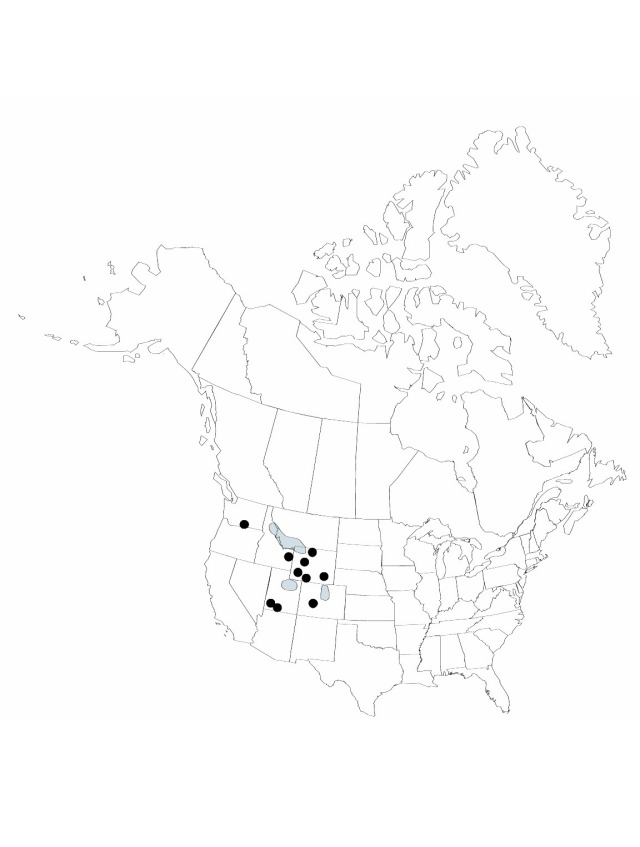Revision as of 01:23, 27 July 2019 by FNA>Volume Importer
Herbs, perennial, strongly tufted, to 4 dm. Rhizomes densely short-branched. Culms terete. Cataphylls several. Leaves: auricles 0.2 mm, apex acutish to rounded, scarious; blade 4–15 cm. Inflorescences 2–7-flowered, loose to congested; primary bract usually longer than inflorescence. Flowers pedicellate; bracteoles ovate; tepals light brown with green midstripe, lanceolate or widely so, 4–5 mm, margins scarious; inner series loosely subtending capsule at maturity, shorter; stamens 6, filaments 0.8 mm, anthers 0.8–1.1 mm; style 0.2 mm. Capsules brown, 3-locular, oblong-ovoid, 3.5–5 × 1.5–1.9 mm, slightly exceeding perianth. Seeds amber, body 0.5 mm, tails 0.3 mm.
Phenology: Flowering and fruiting summer.
Habitat: Exposed slopes, stream banks, and meadows in montane and alpine areas
Elevation: 1600–3000 m
Distribution

Colo., Idaho, Mont., Utah, Wash., Wyo.
Discussion
Selected References
None.
Lower Taxa
None.